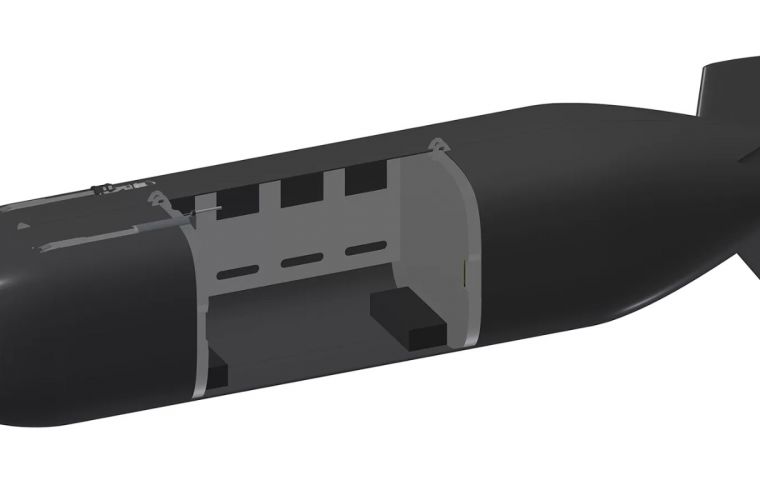MercoPress. South Atlantic News Agency
Royal Navy will have “Cetus”, a crewless submarine in two years
 A concept image of the Cetus in a 40ft container
A concept image of the Cetus in a 40ft container The Royal Navy has ordered its first crewless submarine to shape the future of underwater warfare. In two years' time, Cetus – named after a mythological sea monster – will move through the oceans, monitoring hostile activity, listening out for ships or submarines which may pose a threat to the fleet, or to key national infrastructures such as deep-sea cables and pipelines.
The Royal Navy has experimented with and, in some cases, operated autonomous underwater systems for more than a decade with most being small, off-the-shelf technologies, largely used in mine-hunting.
The £15.4m Cetus is much larger. It is the length of a bus and will be the largest and most complex crewless submersible operated by European navies. It has been designed and built specially for the Royal Navy by Plymouth-based tech firm MSubs, which, in the process, created 10 specialist jobs and supported 70 more.
Funded by the Anti-Submarine Warfare Spearhead program, run by the Royal Navy's Develop Directorate, this is the latest in a series of novel underwater technologies being brought to life to deal with the threats of the next decade.
First Sea Lord Admiral Sir Ben Key said: “This is a hugely exciting moment for Project Cetus as the Royal Navy surges ahead with the development of autonomous technology.
”This extra large autonomous underwater vehicle is a capability step-change in our mission to dominate the underwater battle space. I am delighted that the project is able to support a small, innovative UK company that is at the cutting edge of this sector,“ he added.
At 12 meters long and 2.2 meters in diameter, the 17-tonne submarine can fit inside a shipping container and be transported around the world to wherever the fleet needs it. The unarmed battery-powered craft will be able to dive deeper than any vessel in the current submarine fleet and cover up to 1,000 miles in a single mission.
Acting as an operational demonstrator, the goal is for Cetus – and its successors – to work side by side with traditional crewed submarines, such as the current Astute-class hunter-killers, or independently.
The Royal Navy says the ”crewless submarine is the latest step taken by the into the world of autonomy“.
Autonomous mine hunting systems are already operating in Scotland, driverless Pacific 24 sea boats are undergoing testing, and numerous aerial drones are employed by ships both for reconnaissance/intelligence gathering and target practice for air defence.
”One hundred and twenty years ago, the Royal Navy had the foresight to invest in Holland I – the UK's first submarine – which helped revolutionise naval warfare above and below the waves,“ he said.
”Cetus is our first venture into large-scale, uncrewed submarines. It's exciting, the possibilities are enormous, and I like to think Cetus could change the way we fight under the sea as much as those pioneers in Holland I did.”




Top Comments
Disclaimer & comment rulesCommenting for this story is now closed.
If you have a Facebook account, become a fan and comment on our Facebook Page!